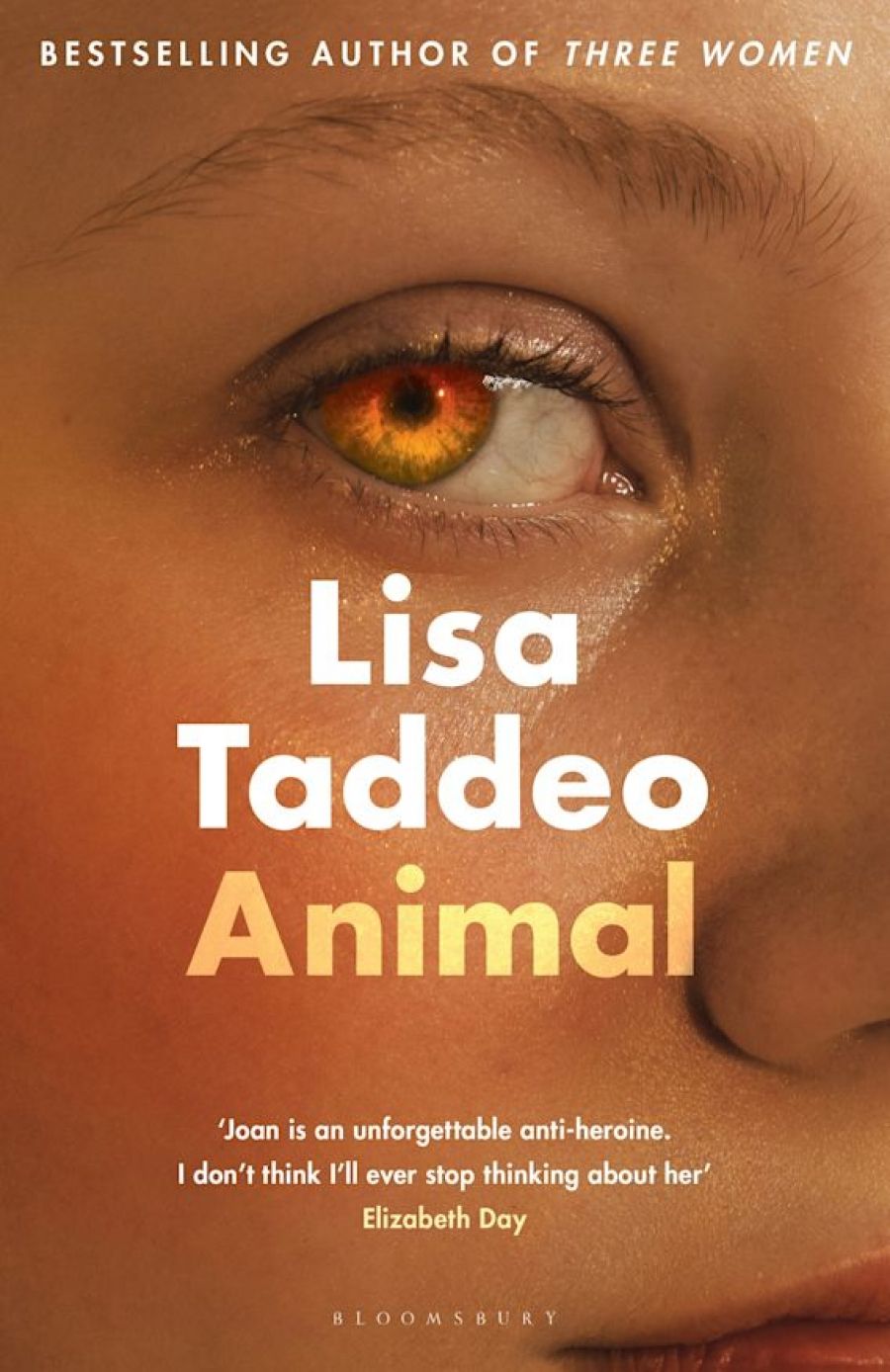
- Free Article: No
- Contents Category: Fiction
- Review Article: Yes
- Article Title: Women of a certain rage
- Article Subtitle: Lisa Taddeo’s scorching first novel
- Online Only: No
- Custom Highlight Text:
In the prologue to her first book, Three Women (2019), a work of non-fiction exploring the structures and expressions of desire, Lisa Taddeo writes that she had not initially intended to focus on women. ‘I thought I’d be drawn to the stories of men. Their yearnings. The way they could overturn an empire for a girl on bended knee.’ It was not until she began interviewing her subjects that she noticed that, while the stories of men all seemed to adhere to the same pattern, women’s stories were tantalisingly oblique; when a woman spoke of desiring a man, it was almost never (or never just) the man himself that she wanted. At first, the question that Three Women poses is: Why do these women desire the men that they do? But the further Taddeo delves inside the lives of her case studies (Maggie, the abused teenager; Lina, the woman in a loveless marriage; Sloane, the pariah of her community), the more the question becomes: Why, after everything that men have done to them, do women continue to desire men at all?
- Featured Image (400px * 250px):

- Alt Tag (Featured Image): Georgia White reviews 'Animal' by Lisa Taddeo
- Book 1 Title: Animal
- Book 1 Biblio: Bloomsbury Circus, $32.99 pb, 321 pp
- Book 1 Readings Link: booktopia.kh4ffx.net/2rjPga
Three Women tries to be disinterested, not always successfully. As Lauren Oyler observed in her review for the New Yorker, Taddeo seems to be mostly invested in the stories of white, heterosexual women, and her fondness for reporting in third-person limited means that it is not always clear who is speaking. When desire assumes a particularly distinctive form in Three Women, Oyler notes, it is hard to tell if it is the subject who is speaking in this way, or if it is an interpretative flourish by the author who is parsing her.
But fiction absolves what non-fiction cannot; a novelist need not concern herself with being exhaustive or detached. In Animal, her first novel, Taddeo immerses herself in the single-mindedness that is permitted in first-person storytelling, and the results are scorching. Whereas Three Women made sex out to be an obfuscation, a diversion rather than a solution to women’s desires, Animal treats intercourse as tantamount to war. Taddeo’s narrator, Joan, is a woman of a certain rage, the Other Woman to more than one married man, and her narrative is less a stream of consciousness than a feverish journey through white-water rapids. Reader, beware of the rocks.
The novel begins with the death of Joan’s boss and long-term sexual partner, Vic, who shoots himself inside a restaurant where Joan is having dinner with another man. In the wake of his suicide, Joan leaves New York and heads for California, with the vague intention of tracking down a person from her past. She takes up residence among a community of fellow truants and misfits in the Santa Monica Mountains, where she meets and befriends the object of her search (for her part, the woman, like the reader, seems ignorant of hers and Joan’s shared history). The teenaged daughter of Vic is also on the move, threatening to harm Joan for her role in her father’s death.
While these events are unfolding, Joan continues to return to the major events of her life: the beginning of her and Vic’s relationship (‘Smart older men will have a way of crawling up your leg. It won’t feel seedy at first and it might seem like it was your idea’); a traumatic event that transpired when Joan was ten; and a multitude of other sexual or sexualised encounters from adolescence to adulthood. We also gather, early on, that Joan is not delivering a soliloquy: her occasional slips into the imperative and bouts of confessional tenderness make it clear she is addressing a child, either real or hypothetical. ‘If someone asked me to describe myself in a single word, depraved is the one I would use,’ Joan tells her listener. Throughout her narrative, Joan remains undecided as to whether ‘depraved’ best describes who she is or what has happened to her; whether she must be sorry for anything or if the world should feel sorry for her.
If Joan is depraved, she is in ways that only women can be. She is the femme fatale equipped with consciousness, for whom sex is a drug that brings no pleasure, who sees herself through the eyes of the men who would rape her. Unsentimental and unscrupulous, she denies her maternal instinct even as it is staring her in the face. Like most anti-heroines, if she lies or steals or kills, she does so only because she is desperate and traumatised. Her depravity stems, in part, from maternal failure: she has no mother left to heal her, and she does not yet have a child to love.
Reduced to its parts, Animal seems like it might be revisiting tired or familiar territory. What sets Joan apart is the exquisite cruelty of her gaze and the forcefulness of her character. She is a highly erratic narrator (in the novel’s final pages, we learn exactly why). With each new sentence, she darts between present and past, emotion and observation, the most vulnerable of longings and the sharpest of barbs.
In Three Women, Taddeo sought to demonstrate that, even if patriarchy relegates women’s stories to certain scripts (the Lolita, the housewife, the whore), there is still ‘complexity and beauty and violence’ to be found in the lives of women trapped within those scripts. The same proves to be true in Animal, a triumph of a novel, sublime in its sensitivity and ruthlessness.


Comments powered by CComment